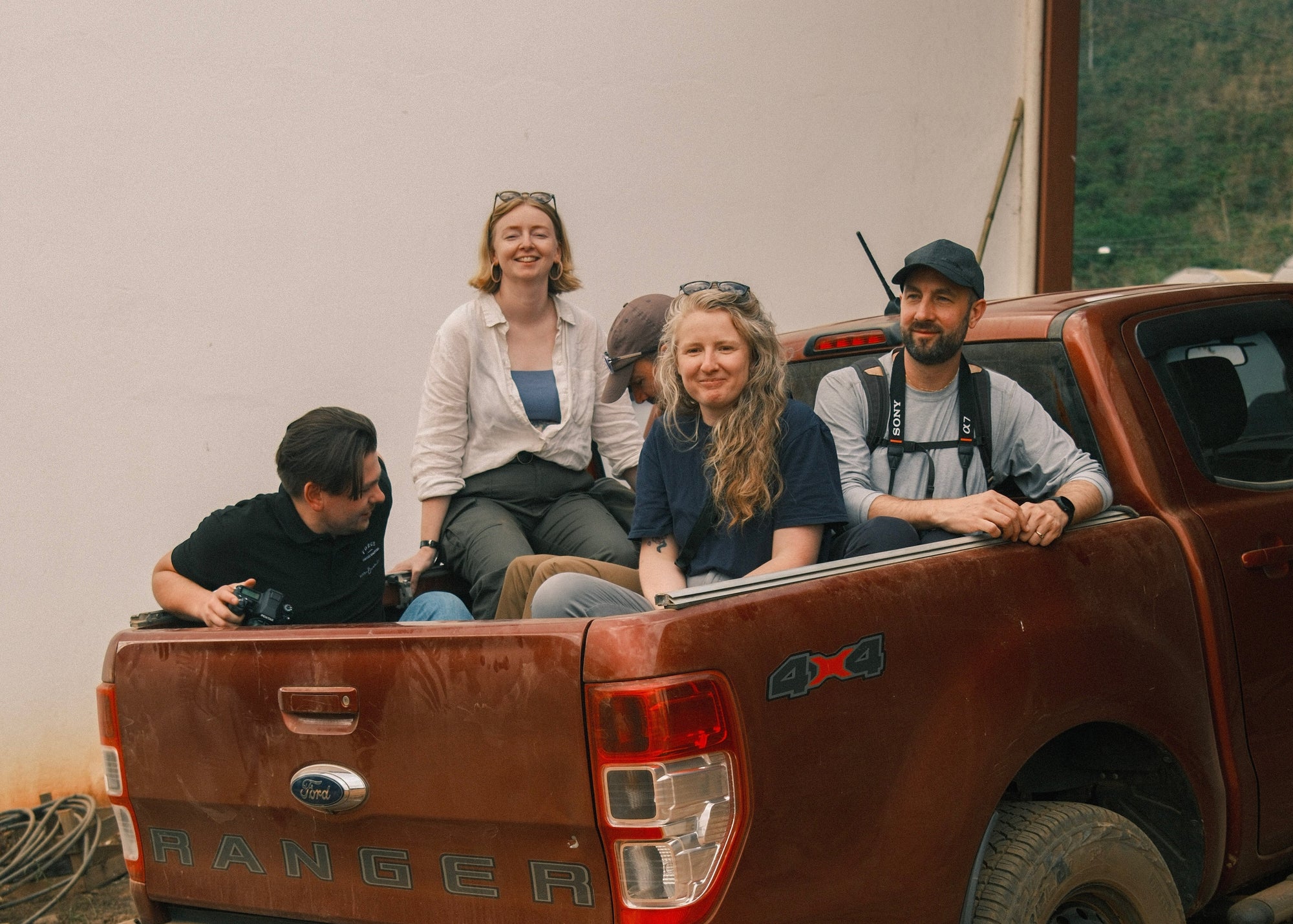It’s hard to believe it’s already been a week since I returned from Minas Gerais, one of Brazil’s key coffee-growing regions. This trip marked my second visit to the Cocarive cooperative, where I spent five unforgettable days. My previous visit was my very first origin experience, and since then, I’ve had the chance to explore other coffee-producing countries across Africa and Central America. With each trip, my understanding of the journey from crop to export has deepened, and because of that, my experience this time around felt different. The insights I’ve taken away are different too.
We kicked off our trip with a day exploring the town of São Lourenço, where we'd be staying for the week. São Lourenço is a popular getaway for people from São Paulo and Rio looking to escape the heat. Known for its healing waters, the town is growing quickly, with new second homes and hotels popping up to accommodate the influx of visitors. Every winter weekend, you’ll find music and food festivals bringing the town to life, while the pace of daily life remains delightfully slow. Coffee tourism is on the rise here too, drawing coffee lovers from the town centre to the stunning coffee-growing mountains of Mantiqueira de Minas. This new wealth is also fuelling a small but growing coffee scene, with speciality roasteries and cafes emerging, tempting coffee professionals like us on a Sunday morning.
Each day from then on, we would start in the morning at the head office and lab of Cocarive. We took a tour of the facilities, from where the producers drop off their samples for pricing up, to the dry mill where it’s sorted, to the new storage facility that’s going to increase the amount they can hold by an additional 9 million kg. We cupped microlots and blends from across the region. Naturals, pulped naturals and a few washed and experimental ferments. Playing around with processing is new to the region, prompted by demand primarily from the Asian and Australian markets.
Whilst most coffee farms in Brazil are wide flat landscapes and monocropped fields that stretch beyond the horizon, this region boasts sheer-sided mountains, microclimates that require no irrigation systems, and shade crops that improve soil health and slow down maturation for a sweeter, more acidic and complex cup.
There’s a cost to growing in these conditions. Cities entice the younger members of farming families to live a more entertaining lifestyle. Jobs can pay less in the cities than picker salaries on farms, but physical labour in the hot sun doesn’t appeal as much when it’s easier than ever to commute and diversify your skills.
The hills and mountain sides offer complications when it comes to picking. Across the flat fields in other parts of the region they use tractors and mechanical help to pick coffee cherries from the trees. Here they strip pick by hand and use motorised tree shakers (that look like hedge strimmers). They manually collect and sort the cherries that fall onto sheets laid on the ground under the plant.
These location restrictions, however, create a higher quality coffee. Across the region, coffee scores are so high that the producers' homes are plastered with Cup of Excellence awards and certificates. The region also delivers such consistent quality that it has gained Denomination of Origin (much like Champagne).
This year's climate has caused the coffee to mature faster than it can be harvested, this combined with a shortage of pickers has resulted with some crop ‘tree drying’, limiting the ability to sort and make processing decisions. With unpredictable climate and weather patterns, the traditional varieties they’ve grown are yielding less. For those who can afford it, producers are beginning to uproot these varieties and replace them with more resistant and adaptable ones. Having a wider range of varietals also makes the harvest season more manageable, as different varieties ripen at different times, helping to spread the workload over several months.
During the week we visited Biaxadão, a name you may recognise from our mainstay Penny Rock espresso blend. In the three years since my last visit, the family has grown to a three generation farm, with Helisson building his house on the land, and raising his new child there. They participate in the S+ project, which Cocarive has developed to reduce the number of pesticides and chemical fertilisers used on the farms it works with. This has led Baixadão to be organic in all but the paperwork. The labour costs are increased by running the farms in this way, but the cost is cheaper than those of the chemicals you can access in Brazil.
As I mentioned in my previous post, there’s little done in moderation here. It’s a big country with high yields of coffee, cattle and dolce de leite. There’s a strong hustler culture, with farms diversifying what they grow and how they use their land. Olive trees, grape vines, historical banana trees and shiny new cabana Airbnb’s now take up space on the mountains, and cowboys roam the valley floors, managing herds that feed the region.
My overall takeaway from the trip is of growth and hospitality. Despite the changes to climate and the challenges that brings, this coffee cooperative is robust and continues to grow to higher yields and higher quality. It’s an unstoppable force that changes your perception of Brazilian coffee within the first hour on a farm. The warmth we received from producers and their families is forever memorable. They offered us food in their homes and drinks on their lawns and we shared car rides and coffees and laughter.
A huge thank you to our pals at Wood Street Coffee for sharing these beautiful photos with us and allowing us to use them.








